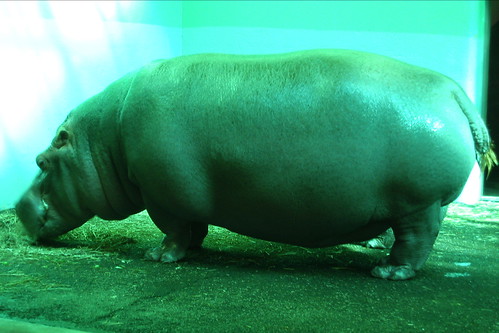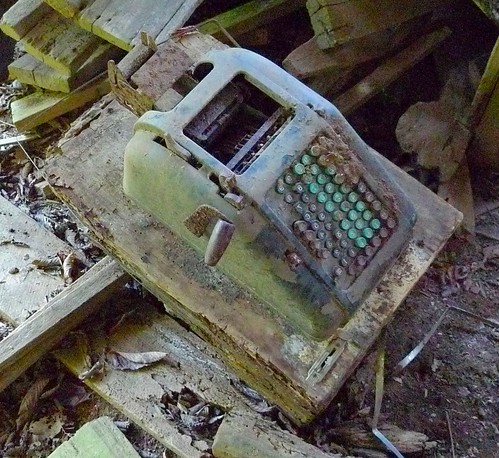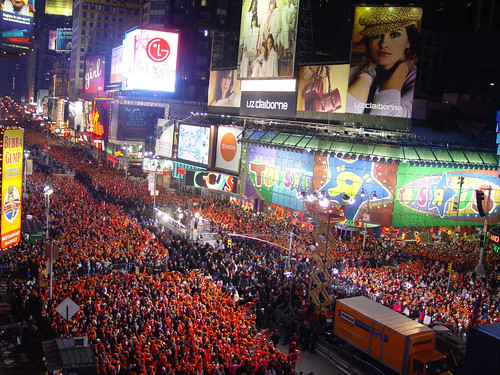
We have not one but two stories about magnets – from poles apart. CC-licensed photo by John Keogh on Flickr.
You can sign up to receive each day’s Start Up post by email. You’ll need to click a confirmation link, so no spam.
A selection of 11 links for you. Before you recuperate, do you cuperate? I’m @charlesarthur on Twitter. Observations and links welcome.
Twitter deleted two tweets from Brazil’s president Jair Bolsonaro for spreading coronavirus misinformation • Buzzfeed News
Ryan Broderick:
»
On Sunday, Twitter deleted two tweets by Brazilian President Jair Bolsonaro because they contained false or misleading information about COVID-19, the disease caused by the novel coronavirus.
“Twitter recently announced the expansion of its rules to cover content that could be against public health information provided by official sources and could put people at greater risk of transmitting COVID-19,” a spokesperson for the platform told BuzzFeed News.
The deleted tweets now redirect to Twitter’s rules and policies page.
According to Brazilian newspaper Folha, the deletions were the first time the site has taken action against content posted by Bolsonaro, first elected in October 2018.
It’s not the first time that the site has used its coronavirus policy to delete a post by a sitting head of state, which Twitter provides a wider latitude than for most users. Last week, the site deleted a post by Venezuelan President Nicolás Maduro for promoting a “natural brew” to cure COVID-19.
In the tweets, Bosolonaro posted videos of himself taken during a walking tour in Brasília on Sunday, in which the president praised the use of anti-malaria drug hydroxychloroquine for treating the virus and encouraged an end to social distancing and isolation measures in the country.
«
Twitter has essentially repurposed its rule against self-harm (ie teenage girls being encouraged to cut themselves) to encompass Covid-19, because it can kill you – its confirmed lethality age range now goes from infant to centenarian. Encouraging “coronavirus parties”, suggesting “cures” – all get deleted when found.
Trump’s social media team is probably too smart to fall foul of this, but it could be quite the impasse if they trip up.
unique link to this extract
This fingerprint-verified smart lock can be foiled by a magnet • The Verge
Ashley Carman:
»
Tapplock, a company that makes fingerprint-verified locks, has had a rough time with its locks’ security. The company’s flagship lock, which has been available since 2019, is apparently easy to pop open with a magnet. YouTuber LockPickingLawyer published a video last week showing how he could use a powerful magnet to turn the motor inside the Tapplock One Plus, causing it to open. The entire process takes less than 30 seconds.
The Tapplock One Plus costs $99 and features a fingerprint sensor. It also has built-in Bluetooth, so people can unlock it using an app. In response to the video, Tapplock commented: “Wow! Shout out to LPL for finding this exploit. Working on a fix with magnetic shielding, will be back.”
This is a commendable reply, although it doesn’t do much for people who already bought the lock. Most companies ignore bug reports or fail to fix the flaw. It at least seems like Tapplock wants to figure out how to prevent this kind of attack.
«
It’s a version of the “Security” XKCD, really. Hang on to the magnet – we’ll have a use for it further down the page.
unique link to this extract
Covid-19 is nature’s wake-up call to complacent civilisation • The Guardian
George Monbiot:
»
Even today, when the world has a total food surplus, hundreds of millions are malnourished as a result of the unequal distribution of wealth and power. A food deficit could result in billions starving. Hoarding will happen, as it always has, at the global level, as powerful people snatch food from the mouths of the poor. Yet, even if every nation keeps its promises under the Paris agreement, which currently seems unlikely, global heating will amount to between 3C and 4C.
Thanks to our illusion of security, we are doing almost nothing to anticipate this catastrophe, let alone prevent it. This existential issue scarcely seems to impinge on our consciousness. Every food-producing sector claims that its own current practices are sustainable and don’t need to change. When I challenge them, I’m met with a barrage of anger and abuse, and threats of the kind I haven’t experienced since I opposed the Iraq war…
…In the US, where 27 million people have no medical cover, some people are now treating themselves with veterinary antibiotics, including those sold, without prescription, to medicate pet fish. Pharmaceutical companies are failing to invest sufficiently in the search for new drugs. If antibiotics cease to be effective, surgery becomes almost impossible. Childbirth becomes a mortal hazard once more. Chemotherapy can no longer be safely practised. Infectious diseases we have comfortably forgotten become deadly threats. We should discuss this issue as often as we talk about football. But again, it scarcely registers.
Our multiple crises, of which these are just two, have a common root. The problem is exemplified by the response of the organisers of the Bath Half Marathon, a massive event that took place on 15 March, to the many people begging them to cancel. “It is now too late for us to cancel or postpone the event. The venue is built, the infrastructure is in place, the site and our contractors are ready.” In other words, the sunk costs of the event were judged to outweigh any future impacts – the potential transmission of disease, and possible deaths – it might cause.
«
It takes a whole world to create a new virus, not just China • The Guardian
Laura Spinney:
»
you have to understand the forces putting those viruses in our path. They are political and economic. They have to do with the rise of industrial-scale farming concerns in China and the resulting marginalisation of millions of smallholder farmers. In order to survive, those farmers have moved into the production of more exotic species – animals that were once eaten only for subsistence. But the bigger operations have pushed the farmers out geographically too, as they have taken up more prime farming land. The smallholders have been forced closer to uncultivable zones such as forests, where bats – reservoirs for coronaviruses – lurk. The stars have aligned, and not in a good way, to channel bat viruses through intermediate mammalian hosts such as pangolins, and into humans.
Even so, to play devil’s advocate for a moment, the problem could still be regarded as uniquely Chinese. But there are two reasons why that’s not true. First, with the opening up of China, its agribusiness has ceased to be wholly Chinese-owned. It is a big recipient of foreign direct investment. Second, as the American pandemic expert, David Morens, and his colleagues pointed out last month in the New England Journal of Medicine, we’ve been watching a similar drama unfold over a much longer timescale with influenza – the disease that has caused more pandemics in the history of humanity than any other.
Flu viruses that infect animals, including poultry and pigs, have periodically spilled over into humans ever since we domesticated those animals millennia ago. But the factory farms that produce our food today ratchet up the virulence of those flu viruses just before they spill over. This ratcheting up has been documented in Europe, Australia and the US more than it has in poor or emerging economies, and it’s what gave rise to the last flu pandemic in 2009.
«
Spinney wrote a book about the 1918 Flu Pandemic, which came out last year; she spent a lot of time promoting it, pointing out the risks we were still running to radio and TV hosts who were frequently just that bit too disbelieving that anything like that could happen again. After all, look how much better our medicine is now! Look at how modern our equipment is! The ancient Greeks called it hubris.
unique link to this extract
Facebook’s fact checkers fight surge in fake coronavirus claims • WSJ
Jeff Horwitz:
»
There is no coronavirus vaccine available for dogs being withheld from humans.
It isn’t necessary to close your windows because military helicopters will start spraying disinfectant.
And baby-formula manufacturers aren’t sending freebies to people who call their customer hotlines.
These are among the viral social-media memes debunked by Lead Stories, a fact-checking site co-founded by Los Angeles entrepreneur Alan Duke…
The former CNN producer’s company, Lead Stories, helps Facebook and other social-media platforms limit the spread of virus-related misinformation by flagging it as false. Business is booming, thanks to a surge of posts that are both dangerous and harder to track than many other forms of what is known as fake news.
The claims that Lead Stories debunks are then labeled as false on Facebook, which limits their spread and links to Lead Stories’ reviews. A staffer combs the platform looking to identify and label duplicates that spring up.
Already ramping up with funding from Facebook to combat misinformation in the 2020 U.S. presidential election, Mr. Duke and others in the industry have pivoted to coronavirus almost full-time.
“We’ve maxxed out all our goals for the month,” he said halfway through March, referring to the company’s contractual targets for Facebook fact-check volumes. Lead Stories continues to review Facebook and Instagram content, and review material from Twitter, YouTube and other platforms that don’t pay it, posting fact checks to its own site. Since its first coronavirus fact check in mid-January, Lead Stories has fact checked more than 200 viral coronavirus claims.
«
But – let’s be clear – not removed it. Claims like that can be utterly untrue, but Facebook won’t remove them.
unique link to this extract
Australian astrophysicist gets magnets stuck up nose while inventing coronavirus device • The Guardian
Naaman Zhou:
»
The 27 year-old astrophysicist, who studies pulsars and gravitational waves, said he was trying to liven up the boredom of self-isolation with the four powerful neodymium magnets.
“I have some electronic equipment but really no experience or expertise in building circuits or things,” he told Guardian Australia.
“I had a part that detects magnetic fields. I thought that if I built a circuit that could detect the magnetic field, and we wore magnets on our wrists, then it could set off an alarm if you brought it too close to your face. A bit of boredom in isolation made me think of that.”
However, the academic realised the electronic part he had did the opposite – and would only complete a circuit when there was no magnetic field present.
“I accidentally invented a necklace that buzzes continuously unless you move your hand close to your face,” he said.
“After scrapping that idea, I was still a bit bored, playing with the magnets. It’s the same logic as clipping pegs to your ears – I clipped them to my earlobes and then clipped them to my nostril and things went downhill pretty quickly when I clipped the magnets to my other nostril.”
Reardon said he placed two magnets inside his nostrils, and two on the outside. When he removed the magnets from the outside of his nose, the two inside stuck together. Unfortunately, the researcher then attempted to use his remaining magnets to remove them.
«
Can’t put it any better than this tweet from Nik Knight: “Turns out the Venn diagram of things 5 year-olds do when they are bored and things astrophysicists do when they are bored is a circle.”
unique link to this extract
Trump won the internet. Democrats are scrambling to take it back • The New York Times
Jim Rutenberg and Matthew Rosenberg:
»
In the three years since Hillary Clinton’s humiliating 2016 defeat, the Democrats have been urgently scrambling to reorder the digital equation, an all-hands-on-deck effort that has drawn a range of new donors, progressive activists and operatives together with veterans of the tech-forward Obama campaigns and the old-line contributors and party regulars of the Bill Clinton era.
So far, the Democrats and their allies have produced new apps to organize volunteers and register voters, new media outlets to pump out anti-Trump content and a major new data initiative to drive what the party hopes will be the biggest voter-mobilization effort in its history.
But while Mr. Trump and his campaign manager, Brad Parscale, have brought conservatives together to build a technological juggernaut for 2020, the Democratic effort has been slowed by the party’s deep-rooted rivalries and divisions.
It has been marked by tension between longtime strategists and party officials, who believe the party need not reinvent the wheel, and moneyed Silicon Valley newcomers who speak of “innovation cycles,” “risk capital” and “disruption” and view the old guard as financially invested in a losing model.
There is lingering resentment over who is at fault for the party’s sorry digital state — whether former President Barack Obama left behind an aging and insufficient party infrastructure as his priorities shifted to his own legacy, or Mrs. Clinton failed to continue the party’s trend of innovation. For their part, many of Senator Bernie Sanders’s adherents are loath to play with what they deride as “the establishment.”
«
The Democrats have three problems: Biden is from the stone age, Sanders’s supporters are irrationally willing to run a scorched-earth campaign, and they have no message besides not being Trump (though that’s a pretty big message for some people). Their advantages: Trump is killing his own voters in Michigan and Florida. Let’s see how that plays out.
unique link to this extract
February 2020: global smartphone sales show resilience with a 14% decline • Counterpoint Research
»
As COVID-19, unfortunately, spreads like wildfire around the globe, its impact on the technology industry is unprecedented. The global February smartphone sales, as a result, showed weakness, but the decline was no more than 14% lower than February 2019; not as bad as the industry had feared.
However China, the initial epicenter of the epidemic, did show a huge 38% decline, but is showing signs of a rebound already. Overall, global smartphone sales in February showed weakness in many markets as consumers became cautious. But with the growth of online channels, we saw sales shifting from offline to online. Offline sales in China fell more than 50% during February. But this fall was partially offset with stronger online sales, so the overall drop at 38%, was not so severe.
«
This is a counterpoint (ahem) to the Strategy Analytics announcement a week ago that global shipments had fallen by 38%; Counterpoint thinks it’s not so bad. March however will surely plumb a new low for smartphones, even though laptops and tablets may well have rocketed – those home offices and schools don’t equip themselves.
unique link to this extract
Loan defaults on car PCPs threaten £110bn finance sector • The Times
Robert Lea:
»
The extent of buying on the never-never through financial products such as personal contract purchase plans (PCPs) has been described as a ticking time bomb and has already come under scrutiny by the Bank of England and the Financial Conduct Authority.
With vast numbers being laid off or furloughed on lower pay, motor finance lenders are scrabbling to offer payment holidays or contract extensions. The motor trade fears that among the seven million who have borrowed to acquire a car in the past three years, many will have to return the keys. That in turn could decrease the residual value of vehicles and leave motorists and finance companies out of pocket.
Car finance is the second largest lending market after mortgage borrowing with vehicles typically the next biggest monthly outgoing for households after accommodation costs. More than nine in ten of all new cars sold in Britain are on some form of financing with the dominant model being PCPs.
In a PCP the motorist pays an upfront amount (usually 10% of the value of the car) and then makes payments typically over three years. At the end of the period, the driver either hands back the keys, makes a “balloon payment” to take ownership or, as the car dealers prefer, trades in to a new model and restarts on another three-year process.
In the past three years, motorists took out nearly £58bn of finance to buy cars, 80% of it through PCPs. According to the Finance and Leasing Association, a further £51.5bn was made available for purchases.
«
As the Sage of Omaha said, it’s only when the tide goes out that you know who’s been swimming naked.
unique link to this extract
The coronavirus crisis and the Trump o’clock follies • The New Yorker
Susan B. Glasser:
»
Even more striking were the results of a CBS/YouGov poll, released this week, in which respondents were asked what sources of information about the coronavirus they found most credible. Democrats rated medical professionals and the Centers for Disease Control and Prevention most highly. Trump came in last among this group, at fourteen%. But, for Republicans, Trump came in at the top, with ninety% saying that they trusted the President’s information about the coronavirus, making him tied for first place with medical professionals. The poll shows that, even when their own lives are literally at stake, a significant subset of the American population no longer believes in almost anything other than the President.
«
And those lives are being lost and endangered: in Florida, at Jerry Falwell’s Liberty University, by people who think it’s a media hoax.
It’s a brutal sorting by reality of people who refuse to engage with it.
unique link to this extract
Total cost of her COVID-19 treatment: $34,927.43 • Time
Abigail Abrams:
»
hen Danni Askini started feeling chest pain, shortness of breath and a migraine all at once on a Saturday in late February, she called the oncologist who had been treating her lymphoma. Her doctor thought she might be reacting poorly to a new medication, so she sent Askini to a Boston-area emergency room. There, doctors told her it was likely pneumonia and sent her home.
Over the next several days, Askini saw her temperature spike and drop dangerously, and she developed a cough that gurgled because of all the liquid in her lungs. After two more trips to the ER that week, Askini was given a final test on the seventh day of her illness, and once doctors helped manage her flu and pneumonia symptoms, they again sent her home to recover. She waited another three days for a lab to process her test, and at last she had a diagnosis: COVID-19.
A few days later, Askini got the bills for her testing and treatment: $34,927.43. “I was pretty sticker-shocked,” she says. “I personally don’t know anybody who has that kind of money.”
Like 27 million other Americans, Askini was uninsured when she first entered the hospital. She and her husband had been planning to move to Washington, D.C. this month so she could take a new job, but she hadn’t started yet. Now that those plans are on hold, Askini applied for Medicaid and is hoping the program will retroactively cover her bills. If not, she’ll be on the hook.
«
I think this could be one of those “you owe the bank a million pounds, you have a problem; you owe the bank a billion dollars, the bank has a problem” things. If enough people get these bills and can’t pay them, there will be a reckoning: I expect people will band together and challenge these bills.
unique link to this extract
Errata, corrigenda and ai no corrida: none notified














